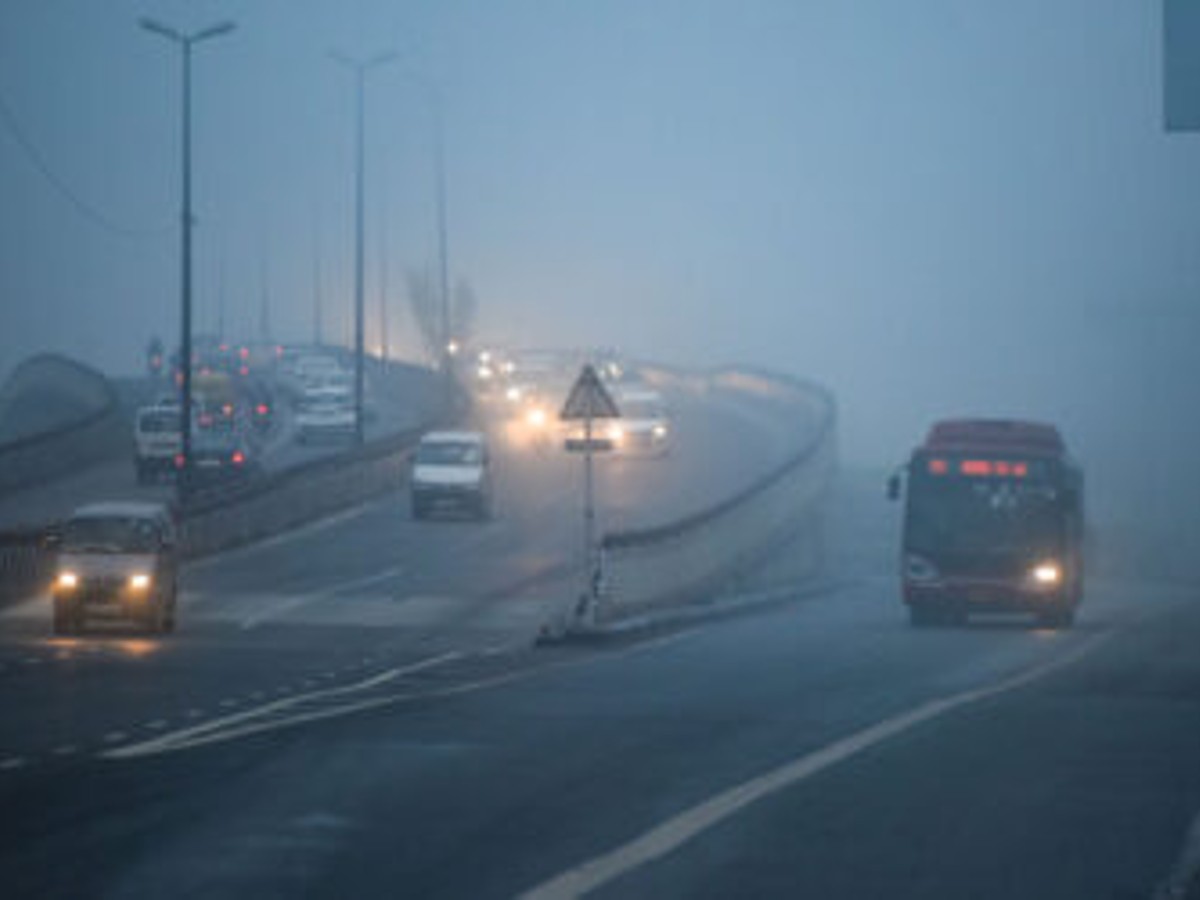
Vehicles ply on the road with their headlights on. (Representational photo: Getty)
Four days after Diwali, the air quality in Delhi remained in the “very poor” category on Friday due to poor dispersion of pollutants owing to weak winds.
According to the India Meteorological Department (IMD), the national capital witnessed a clear morning on Friday with the minimum temperature settling a notch below normal at 14.6 degrees Celsius.
The relative humidity at 8.30 am was 90 percent, the weather office said.
However, the air quality deteriorated from 333 on Thursday to 346 at 9.30 am on Friday, the Central Pollution Control Board (CPCB) data showed.
Delhi’s Anand Vihar monitoring station recorded the AQI in the “severe” category with an index value of 443 at 9.20 am on Friday.
Among the monitoring stations that recorded “very poor” air quality were Wazirpur (380), Patparganj (363), Vivek Vihar (397), Punjabi Bagh (370) and Jahangirpuri (397).
An AQI between zero and 50 is considered “good”, 51 and 100 “satisfactory”, 101 and 200 “moderate”, 201 and 300 “poor”, 301 and 400 “very poor”, and 401 and 500 “severe”.
According to the IMD, the sky will remain clear through the day and the maximum temperature is likely to settle around 32 degrees Celsius.
The maximum temperature on Thursday had settled at 32.3 degrees Celsius, a notch above normal.
The air quality in Delhi on the morning after Diwali was recorded in the ‘very poor’ category but the situation was relatively better than previous years due to favourable meteorological conditions which diluted the effect of firecrackers and stubble burning.
According to forecasting agencies, the city is set to record its best air quality for the day after Diwali since 2015 on Tuesday.
On Monday night, people in Delhi flouted the ban on firecrackers with impunity. PM2.5 concentration at most places in the capital was over 550 micrograms per cubic metre by 1 am. However, PM2.5 levels dropped below 350 micrograms per cubic metre by 10 am due to warm and windier conditions.
PM2.5 are fine particles that are 2.5 microns or less in diameter and can travel deep into the respiratory tract, reaching the lungs and entering the bloodstream.
The Delhi government had in September announced a complete ban on the production, sale and use of all types of firecrackers till January 1, 2023, including on Diwali, a practice it has been following for the last two years.
(With PTI inputs)
Follow us on:
Instagram: instagram.com/thepatriot_in/
Twitter: twitter.com/Patriot_Delhi
Facebook: facebook.com/Thepatriotnewsindia
The previous coldest January day in the past years was recorded on January 15, 2024,…
Ahead of her January 11 Delhi concert, legendary vocalist Begum Parveen Sultana reflects on her…
Sood said universities are no longer limited to academic instruction and are increasingly emerging as…
The accused has allegedly confessed his involvement and further investigation is underway to recover the…
The petitions challenge the Delhi School Education (Transparency in Fixation and Regulation of Fees) Act,…
A Saket court staffer allegedly died by suicide after jumping from a building, with police…